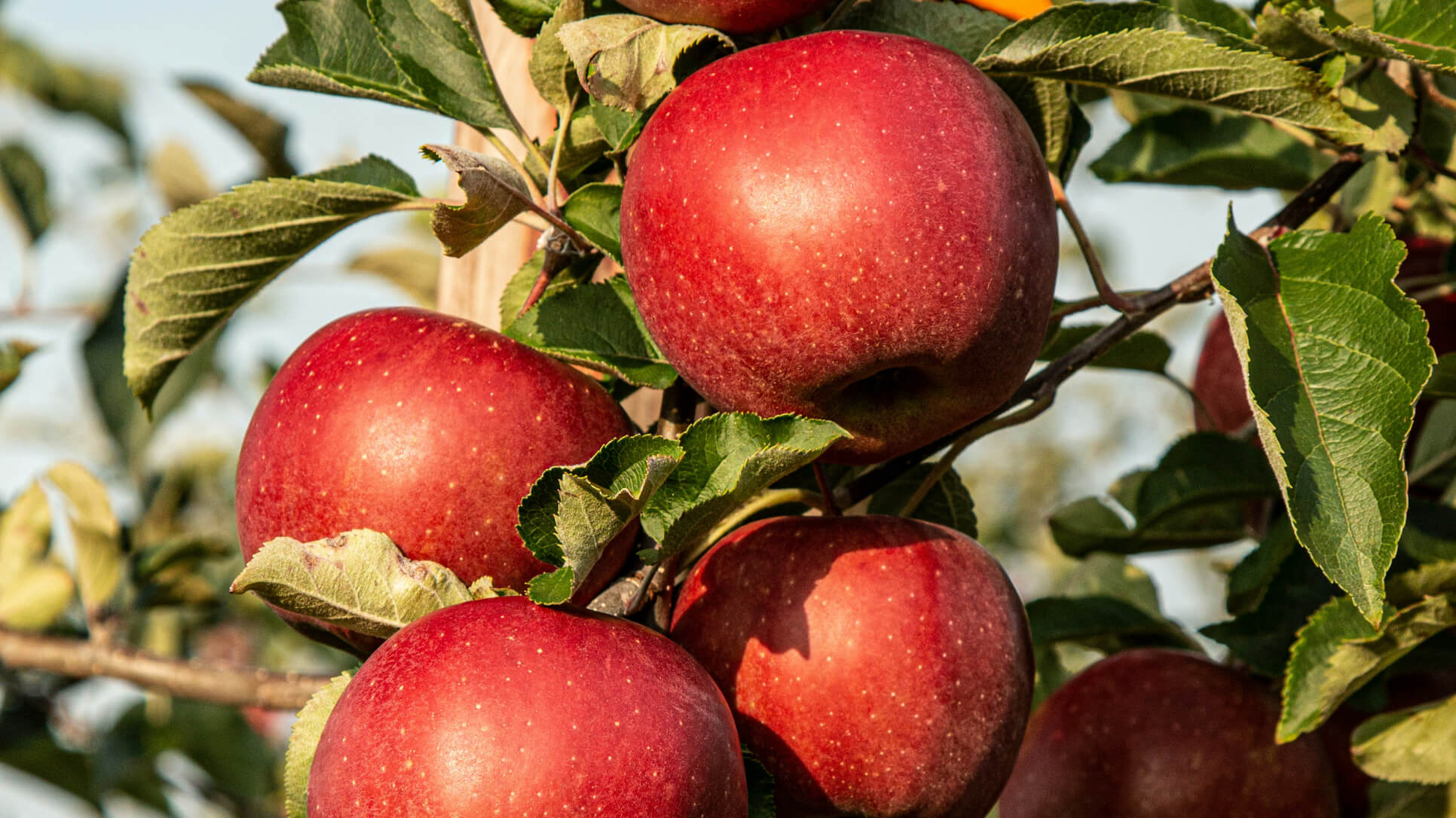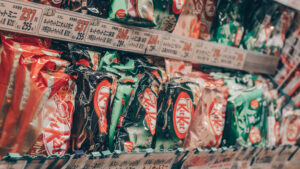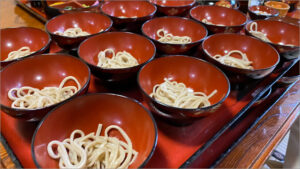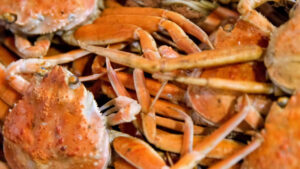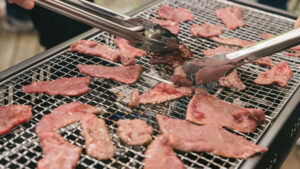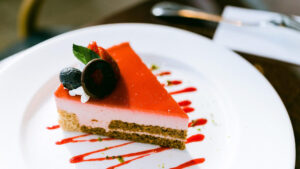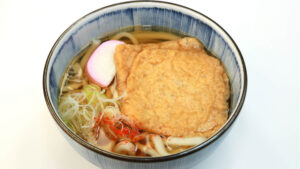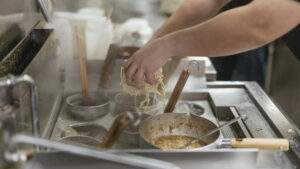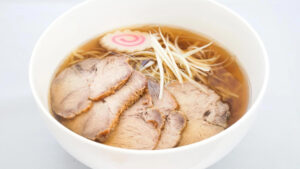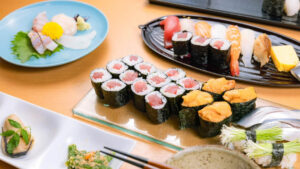A trip to Aomori is most delicious when you pair what’s in season with where it’s grown. In spring, white apple blossoms blanket Hirosaki; in early summer, Mutsu Bay scallops turn sweet; and from autumn through winter, Ōma bluefin tuna peaks in the Tsugaru Strait. In Hachinohe, the humble “senbei-jiru”—Nanbu wheat crackers simmered in dashi—warms you to the core. This article introduces, in first-timer-friendly terms, apples (varieties, hands-on experiences, and events), senbei-jiru (history, how to eat it, and where to try it), seafood (tuna, scallops, and squid), and how to navigate local markets. We also highlight the best seasonal timing and handy phrases to use on the spot, guiding you toward a no-stress Aomori food trip.
Contents
Guide to Savoring Aomori Apples
The Joy of Choosing by Variety
In Aomori, you can enjoy a wide range of apple varieties whose flavors and aromas
change with the seasons. Here we highlight three traveler-favorite varieties in an
easy-to-understand way.
Fuji: The Golden Balance of Sweetness and Aroma
Expect a crisp bite and juice that floods your mouth. Fuji balances sweetness and
acidity beautifully, making it the perfect “first Aomori apple.” Because each fruit
is carefully bagged while growing, the skin turns smooth with a vivid red hue.
After harvest, the apples rest in dedicated cold storage so they keep excellent
quality through spring and summer—great news for travelers visiting in those seasons.
Basic data:
- Harvest: Late October–early November / Sales: mainly April–August
- Parentage: (Mother) Kokko × (Father) Delicious
- Breeding/Registration: Developed by the Tohoku Branch of the Ministry of Agriculture’s Horticultural Research Station (then in Fujisaki, Aomori); named and registered in Shōwa 37 (1962)
- Fruit/Appearance: ~350 g; brownish-red stripes
- Texture/Flavor: slightly coarse, very crisp; very juicy; excellent sweet-tart balance
Tsugaru: Refreshing, Light Sweetness
As the short northern summer ends, Tsugaru colors a deep red and delivers a gentle,
comforting sweetness in every bite. Acidity is minimal; the flesh is firm and dense
with plenty of juice—ideal for breakfast or a snack. In Aomori it’s second only to
Fuji in production and represents the fresh taste of autumn trips.
Basic data:
- Harvest: Early–mid September / Sales: September–October
- Parentage: Golden Delicious (mother) × Kōgyoku (Jonathan) (father)
- Breeding/Registration: Developed by the Aomori Apple Experiment Station; registered in Shōwa 50 (1975)
- Fruit/Appearance: ~300 g; bright red with vivid stripes
- Texture/Flavor: firm and dense; very juicy; strong sweetness with almost no acidity
Ōrin: Rich, Tropical Aroma
Nicknamed the “queen of green apples,” Ōrin offers ample sweetness with only a hint
of acidity, plus an elegant aroma that lingers. The dense, slightly firm flesh gives
satisfying bite. It pairs wonderfully with yogurt—just add slices to your breakfast
bowl for a fragrant start to the day. It’s also widely available from autumn through
the following summer, which is convenient for travelers.
Basic data:
- Harvest: Late October–early November / Sales: Late October–August
- Parentage: Golden Delicious (mother) × Indo (father)
- Breeding/Naming: Bred by the late Mr. Tadanosuke Ōtsuki in Fukushima; named in Shōwa 27 (1952)
- Fruit/Appearance: ~300 g; yellow-green skin
- Texture/Flavor: slightly firm and dense; very juicy; barely any acidity—sweetness and fragrance stand out (excellent with yogurt)
Seasons & Key Events
Best Timing for Harvest Season (Sep–Nov)
Aomori’s apples each have their own peak. In early autumn (early–mid September), Tsugaru is at its best—minimal acidity and refreshingly sweet. As autumn deepens (late October–early November), Fuji and Ōrin reach their prime: Fuji is crisp, juicy, and perfectly sweet–tart, while Ōrin offers a rich aroma and gentle sweetness. For picking experiences, look for orchards running early August–early November (e.g., Hirosaki City Apple Park). Mornings and evenings can be chilly—bring a light outer layer and comfortable walking shoes.
Spring Apple Blossom Viewing (Hirosaki Area)
In May, after cherry season, Hirosaki City Apple Park hosts the Hirosaki Apple Blossom Festival. With snow-capped Mt. Iwaki as a backdrop, fields of white apple blossoms are breathtaking. Apple-themed foods let you savor Tsugaru’s food culture, and the park is ideal for strolling and photography. Crowds are often calmer than during cherry blossom season; for photos, the soft light from morning to midday highlights the contrast between full bloom and fresh greenery.
Tips for Apple Park & Farm Stands
Hirosaki City Apple Park spans about 9.7 ha and grows roughly 80 varieties across 2,300 trees—a true “apple theme park.” Highlights include the Apple House (Ringo no Ie) for souvenirs and snacks, the Suribachiyama Lookout with panoramic views of Mt. Iwaki, the city cultural property Former Osanai Residence, and the kimori cidery. Try the paid picking experience (early August–early November), then compare flavors and use onsite shipping at the park or farm stands so you don’t add to your luggage. The park also offers year-round retail sales, so you can enjoy Aomori apples even on spring–summer trips.
Experiences & Local Eats
Apple-Picking Basics & Booking Tips
In Aomori, apple picking typically runs from early August to early November (varies by orchard).
Check the orchard’s official website for its harvest calendar and pricing before you go.
- What to bring: Comfortable walking shoes, clothes you don’t mind getting dirty, hat and sunscreen; a light jacket in autumn. Insect repellent is helpful.
- Booking checklist: Confirm party size, start time, duration, and take-home amount (by kg or piece). Check “light rain OK / severe weather canceled” and the cancellation policy.
- Picking technique: Lift the fruit gently upward and twist to pick it cleanly with the stem. Choose by color, firmness, weight, and aroma. Do not put picked fruit back.
- Orchard etiquette: Don’t break branches, stay within designated areas, and follow rules on eating while walking and smoking.
- Transport & storage: Use cushioned boxes for shock protection. Store in a cool place at room temp, or refrigerate for longer keeping. For international flights, check your destination’s fresh-produce import rules in advance.
- Payment: Some orchards are cash-only; carry a small amount of cash along with a cashless option.
Apple Pie Tasting Route
Downtown Hirosaki is an apple-pie battleground. Sampling three styles in half a day makes the differences deliciously clear.
- Sample route (example):
- Morning: A café for a classic slice (crisp pastry with gentle sweetness).
- Late morning: A bakery for grab-and-go (buttery aroma, hand-sized pies).
- Afternoon: A pâtisserie for a richer style (with custard or fresh cream; good for takeout).
- What to compare: Crust (pie vs. tart), sweetness (subtle → rich), spice (with/without cinnamon), fruit texture (chunky vs. compote), serving temp (warm vs. chilled), and variety labeling (Fuji, Tsugaru, Ōrin, etc.).
- Pro tips: Pick up an Apple Pie Map at the tourist office; grab limited items in the morning; share slices to avoid overdoing it; carry ice packs for warm days.
- Allergens: Check display labels for dairy, eggs, wheat, gelatin, etc.
Mastering Hachinohe’s Local Dish: Senbei-jiru
What Is Senbei-jiru?
Born in the Edo period and handed down mainly in southern Aomori through northern Iwate,
senbei-jiru is a soy-sauce–seasoned soup (hotpot) that gently simmers
Nanbu senbei—round wheat crackers made by mixing flour with salt and water and baking in an iron mold—
in chicken or fish broth. It resembles suiton (wheat dumpling soup) in ingredients and stock,
but uses shelf-stable crackers instead of raw dough, which is the defining feature.
Main area of tradition: Hachinohe City
Typical ingredients: senbei, leek/green onion, chicken, shirataki (konjac noodles), ita-fu (wheat gluten), burdock root,
freeze-dried tofu, carrot, mushrooms, etc.
History & spread: In the cold former Nanbu domain, senbei developed as a vital flour-based staple when rice harvests were poor.
After WWII, a hotpot-specific senbei that resists disintegrating was created and the dish settled as home cooking.
From the Heisei era onward, tourism promotion rebranded it as “Hachinohe Senbei-jiru,” turning it into a nationally known specialty and a symbol of local revitalization (it also helped launch the B-1 Grand Prix movement).
Characteristics of Nanbu Senbei (Stays Intact When Simmered)
The soup uses a dedicated cracker—kayaki senbei (also called otsuyu or nabe-yo senbei).
Even after absorbing broth it holds its shape, delivering a pleasantly chewy, “al dente”-like bite.
- Roots: A traditional staple of the former Nanbu domain; once baked at home in iron molds as a long-keeping food.
- Evolution: After the war it was refined specifically for soups, achieving today’s resilient texture.
- Tasting cues: How it soaks up broth, the spring at the rim, and the core’s firmness vary subtly by maker and restaurant.
The Umami of Chicken- and Fish-Based Broths
The most common style is a chicken-stock × soy-sauce base. Burdock, leeks, mushrooms, and shirataki add aroma and texture,
while the crackers absorb and amplify the umami. Coastal variations include a salt-based fish broth (with cod or grilled mackerel—many homes use canned mackerel)
and a hearty miso version with horse meat (sakura-nabe).
- Chicken: Rounded, comforting depth—the classic.
- Fish: Clean, saline savor from cod or mackerel.
- Miso: Rich, slightly sweet complexity—great with horse meat.
Flavor keys: The fragrance of burdock and the savor of mushrooms build depth in the broth and pair beautifully with the senbei’s gentle wheat sweetness.
Where to Try It
Classic Eateries in Central Hachinohe
In downtown Hachinohe, local diners and specialty restaurants serve a range of styles—from the classic
chicken broth × soy sauce to salted fish stock and miso-based versions. Each shop has its own character.
- How to order: Say “Senbei-jiru as a set meal” or “à la carte.” Some places let you choose the broth
(soy/salt/miso) and main ingredients (chicken/fish/mushrooms). - Price range: Lunch sets about ¥800–¥1,300; à la carte about ¥600–¥900 (varies by season and shop).
- Example: Sasuke offers set meals with small side dishes, pickles, and squid sashimi—a one-plate taste of “Hachinohe style.”
Local Experience at Morning Markets & Food Stalls
At early-morning markets and events, steaming stall-style senbei-jiru is a staple. Served in paper cups,
it’s perfect for tasting and comparing different broths as you go.
- Game plan: Carry coins/small cash. During rush hours, line up, receive your cup, then step aside to eat.
- Etiquette: If there’s shared seating, keep turnover in mind. Sort trash at the designated bins.
- Cold-weather tip: Sea breezes can be chilly—light down jacket and gloves help.
- How to enjoy: Compare chicken vs. fish vs. miso broths; try toppings like extra mushrooms or green onions.
Souvenir Soup & Senbei Sets
To recreate the dish at home, pick up a combo of hotpot (otsuyu) senbei + soup base.
It’s light, durable, and keeps well—ideal as a gift.
- What to buy: Look for nabe/otsuyu/kayaki senbei; concentrated soup (soy/salt/miso); or powdered stock.
Check labels for allergens (wheat, soy, chicken, mackerel, etc.). - 2-serving method (guide):
- Heat broth + chosen soup base; add burdock, carrot, mushrooms, and shirataki and simmer.
- Hand-break the hotpot senbei into pieces and add; simmer until the rims soften while the center retains a light chew.
- Finish with sliced green onions. Serve immediately—don’t put pieces back once added.
- Travel tips: Vacuum/individually wrapped packs are easy to share; use parcel delivery to lighten your luggage; before flying home, check your country’s import rules (e.g., meat extracts).
- Nice add-ons: Canned mackerel (for fish-broth variation), dried mushrooms, Aomori-grown green onions and burdock.
Feast on the Sea: Ōma Bluefin, Mutsu Bay Scallops & Port-Town Eats
Must-Eat Specialties
Ōma Hon-Maguro (Deep Red Lean & Luxurious Toro)
Wild Pacific bluefin from the rough Tsugaru Strait truly earns the nickname “black diamond.”
Tuna landed in Ōma Town are managed under the regional collective trademark
“Ōma Maguro”; fish over 30 kg carry a sticker with a serial number for strict traceability.
Many weigh around 100 kg and deliver top-tier richness and flavor.
- Fishing & quality: Primarily single-hook handline and longline. Unlike netting, these methods minimize damage; bleeding and nerve-spiking preserve peak freshness. Some boats also use brief electric stunning near the hull to reduce loss during landing.
- Season: August–January. Peak fat content in autumn–winter brings the ultimate combo of savory red meat and melting toro.
- Trivia: Trademarked in 2007. Record auction prices drew national attention—most notably ¥333.6 million in 2019 for a single fish.
- How to enjoy: Lean cuts shine as zuke (marinated) or nigiri; medium and fatty toro are best as simple sashimi to savor the sweetness of the fat.
Mutsu Bay Scallops (Thick, Sweet Adductor)
Fed by nutrient-rich waters from the Hakkōda Mountains and the beech forests of Shirakami,
Mutsu Bay produces scallops prized for their tenderness, thickness, and mellow sweetness.
Aomori’s scallop catch ranks among Japan’s top, making it a signature product.
- How they’re raised: Mainly suspended culture—basket and ear-hung methods—plus some seeding on the seabed. Scallops grow on natural phytoplankton (no feeding), yielding a clean, sweet taste.
- Best season: April–June, when the adductor thickens and flavor concentrates. Locals even mark June 18 as “Mutsu Bay Scallop Day.”
- Freshness: Shipments use the oxygen-pack technology “OXY Genki!”, keeping scallops harvest-fresh for up to four days from shipping when unopened.
- How to enjoy: Sashimi highlights the springy snap; ama-yaki on a grate or butter–soy sauté adds irresistible aroma. They’re high-protein, low-fat, and rich in glycogen.
Hachinohe Squid Dishes (Sashimi, Marinated, Grilled)
Hachinohe Port boasts Japan’s top squid landings. You’ll find imported red squid, local
surume-ika (summer–autumn), and yari-ika in winter throughout the year—and on some days,
shops even showcase fresh “evening-caught” squid landed that afternoon. Expect a crisp bite and a clean, natural sweetness.
Classic ways to enjoy:
- Sashimi with shiokara “wata” sauce: the clean, rich “goro” (innards) deepens umami without funk.
- Goro-yaki (grilled with innards): toss flesh with the “goro” for a toasty, savory finish.
- Hachinohe “Bakudan” bowl: cubes of squid marinated in garlic–soy, served over rice.
Souvenir tip: The local snack “Nakayoshi”—Hachinohe squid sandwiched with cheese—pairs perfectly with tea or drinks.
Aomori Gyosai Center “Nokkedon” — How to Enjoy
Nokkedon is a build-your-own seafood bowl: buy meal tickets first, get a bowl of warm rice, then
tour the market counters to “top” your bowl with whatever you like. It’s a tasty, hands-on way to sample Aomori.
How it works
- Buy meal tickets at the information desk.
- Pick up your rice bowl (warm white rice).
- Visit about 30 stalls and exchange tickets for sashimi and side dishes to top your rice.
- Use tickets for miso soup or deli items, then sit and enjoy.
Tips for success
- Ticket strategy: Each item costs a set number of tickets (e.g., lean tuna = 1; fatty otoro = 3). Choosing mostly 1-ticket items lets you try more varieties.
- Season & picks: Ask, “What’s today’s recommendation?” Scallops (sweet) and tuna (lean/toro) are can’t-miss.
- Flavor balance: Add in order—white fish → lean red → fatty cuts—to keep flavors clear; finish with scallions and wasabi.
- Hygiene & manners: Don’t touch toppings with fingers; ask before photos. At popular stalls, confirm ticket counts first.
Sample bowls
- Value-first: scallop adductor + lean tuna + squid + salmon + omelet + pickles
- Splurge: otoro + sea urchin + salmon roe + scallop frill (for texture)
Hasshoku Center: A Tasting Walk Plan
A sprawling indoor market where you can buy, eat, and ship in one place.
A half-day visit—2–3 hours from morning to lunchtime—is ideal.
2–3 Hour Sample Itinerary
- At opening: Do a full lap to check prices and freshness, then start light with a mini seafood bowl or squid sashimi.
- Midway: Graze on deli bites, bakery items, and sweets—built-in snack break.
- Finale: Sit down at a cook-on-the-spot eatery for something warm: grilled fish, fries, or scallops sautéed in butter–soy.
Pro Tips
- Carry small cash + a cashless option (some small stalls are cash-only).
- Share purchases to sample more and avoid overdoing it.
- Bring a cooler bag & ice packs, or use refrigerated courier shipping.
- For souvenirs, Nakayoshi (squid & cheese snack) and dried seafood are popular.
Manners & Safety
- Plan to eat raw items the same day. If you’ll be carrying food for a while, choose cooked items.
- Ask staff before photos. Keep hands clean for samples and sort trash at designated bins.
Make the Seasons Your Ally: Savor “Only-in-Aomori,” One Plate at a Time
Aomori is a treasure trove where the star changes with the season:
the Apple Blossom Festival in May, apple harvest from August–November,
Mutsu Bay scallops from April–June, Ōma bluefin tuna from August–January,
and Hachinohe squid year-round. Time your trip for these windows and your satisfaction will soar.
At markets, mix meal tickets with cash/cashless smartly, and ship souvenirs from farm stands to travel light.
Follow the sections in this guide and you’ll experience it all at once—the aroma of apples, the depth of dashi,
and the freshness of port towns. On your next weekend, go find your very own “first bite of Aomori.”
